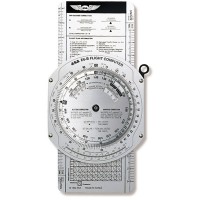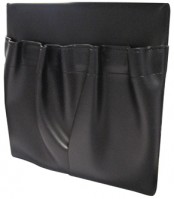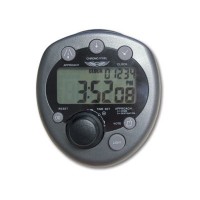FREE SHIPPING ON ORDERS OVER $350 (USA ONLY - SOME EXCLUSIONS APPLY) | 877-4-SPRUCE
ASA Holding Pattern Visualizer
$11.95/Each
Part# 13-06940
MFR Model# ASA-HPC-2
MFR Model# ASA-HPC-2
Overview
|
This useful tool shows a pilot what entry is appropriate given the as signed holding radial. It is also a very useful teaching aid.
Approved for use during FAA Knowledge Exams! You are flying a heading of 360 when you are issued this clearance “…hold east of the ABC VORTAC on the zero niner zero radial, right turns…” This clearance is enough to invoke a rapid heartbeat in the most experienced pilots. Although holding patterns may be used on any instrument flight, holding clearances are issued infrequently enough for pilots to get a little rusty on the procedures. Visualizing a holding pattern from a current position is one of the more challenging aspects of instrument flight. ASA’s holding pattern computer shows pilots which entry is appropriate given the assigned holding radial. The design not only displays the appropriate entry procedure for both standard and nonstandard patterns (direct, parallel, or teardrop), but also depicts how pilots get to this entry, given their current aircraft heading. Holding pattern practice is now part of the instrument currency requirements (every 6 months, instrument-rated pilots must execute 6 instrument approaches and practice intercepting and tracking a NAVAID, as well as holding procedures). This handy pocket-sized tool may be used as a refresher on the ground, as well as a quick-reference guide in flight. A perfect learning tool for experienced instrument pilots, students, and convenient instructional aid for flight instructors. Made from durable plastic in the USA. |
Specifications
- Dimensions: 3.5" x 5"
- Weight: 0.05 lbs
Q&A
Please note, Aircraft Spruce's personnel are not certified aircraft mechanics and can only provide general support and ideas, which should not be relied upon or implemented in lieu of consulting an A&P or other qualified technician. Aircraft Spruce assumes no responsibility or liability for any issue or problem which may arise from any repair, modification or other work done from this knowledge base. Any product eligibility information provided here is based on general application guides and we recommend always referring to your specific aircraft parts manual, the parts manufacturer or consulting with a qualified mechanic.




























